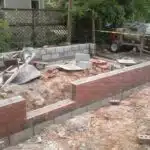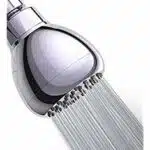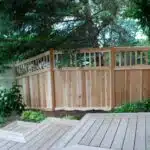Waterfalls are beautiful and calming additions to any landscape, large or small. A small waterfall can be a delightful feature in a backyard garden that adds visual interest and soothing sound. While building a small waterfall might seem like a daunting task, it is a manageable project for even novice landscapers with the right tools and guidance.
Creating a small waterfall involves several key steps, including designing the layout, choosing appropriate materials, and installing the necessary components. It requires careful planning and attention to detail to ensure that the final result is both aesthetically pleasing and functional. In this article, we will provide step-by-step instructions on how to build a small waterfall that will enhance your outdoor space and provide an oasis of calm for you and your guests. Whether you are looking to create an intimate retreat or simply wanting to add some natural beauty to your yard, building a small waterfall is an excellent way to achieve your landscaping goals while serving others by providing them with a peaceful environment.
Assessing Your Landscaping Needs
Landscaping is a crucial aspect of any property, and adding a small waterfall can significantly enhance its aesthetics. However, before planning the design, you must first assess your landscaping needs. One of the essential factors to consider is your budget. You should evaluate how much you are willing to spend on the project and plan accordingly. Keep in mind that building a small waterfall may require extra expenses such as purchasing materials, hiring contractors or landscapers, and maintenance costs.
Another critical factor when assessing your landscaping needs is evaluating aesthetics. Consider the overall design and style of your property to ensure that the waterfall complements it rather than clashes with it. You may want to take inspiration from other waterfalls or natural landscapes to guide your design choices. Also, think about the location where you will build the waterfall – is there enough space for it? Will it be visible from different angles?
In conclusion, assessing your landscaping needs is crucial before building a small waterfall. It involves evaluating both your budget and aesthetic preferences to ensure that the final product meets your expectations while also complementing your property’s overall design. Once you have assessed these factors, you can move on to planning your waterfall design by considering various elements such as size, shape, and water flow rate.
Transitioning into Planning Your Waterfall Design:
With a clear understanding of your budget and aesthetic preferences in mind, you’re now ready to delve into planning your waterfall design. This stage involves combining creativity with practicality by identifying specific elements such as location, size, shape, and water flow rate that will influence the final outcome of your project.
Planning Your Waterfall Design
Design considerations play a critical role in the planning of a small waterfall. You need to decide on the size and shape of the waterfall, including the type of rocks, stones, and plants you will use. Consider how much space you have available, as well as your personal preferences for style and design. Think about whether you want a natural-looking or modern-style waterfall.
Budgeting options also play an essential role in designing a small waterfall. Determine how much money you are willing to invest in your project before getting started. Consider purchasing materials from local sources to save money on shipping costs. Also, think about using recycled materials or repurposing items from around your home to cut down on expenses.
When designing your small waterfall, it is vital to consider environmental factors such as drainage and water supply. Ensure that there is adequate water flow for your desired height and width of the waterfall while taking into account any potential impact on nearby water sources or ecosystems. Additionally, consider incorporating energy-efficient pumps and lighting into your design to reduce environmental impact and save money on operating costs.
As you plan your small waterfall’s design and budget, choosing the right location is crucial for success. The ideal spot should have access to electricity for powering pumps and lighting while providing enough space for construction without damaging existing structures or landscapes. Consider factors such as sunlight exposure, soil type, wind conditions when selecting a location for optimal growth of plants used in construction. With careful planning and consideration of these factors, you can create a beautiful small waterfall that fits perfectly into its environment while staying within budget constraints.
Choosing The Right Location
When it comes to building a small waterfall, choosing the right location is crucial. This decision will ultimately determine the success, function, and aesthetic of the waterfall. As a professional landscape architect, I have seen too many poorly placed waterfalls that fail to meet their potential due to improper location selection.
First and foremost, landscaping requirements must be considered when choosing the location for a small waterfall. The area should be free of any underground utility lines or pipes that could be damaged during excavation. Additionally, the soil should be able to support the weight of both the waterfall structure and any surrounding vegetation. It is also important to consider any existing landscaping features such as trees or shrubs and how they will complement or detract from the overall design.
Environmental considerations are another crucial factor in location selection for a small waterfall. The area should have easy access to a reliable water source and proper drainage to prevent erosion and damage to surrounding areas. It is also important to take into account any potential environmental impacts such as disrupting natural habitats or contributing to water waste. By carefully considering these factors, you can ensure that your small waterfall not only looks beautiful but also functions sustainably within its environment.
With careful consideration of both landscaping requirements and environmental considerations, you can choose a location for your small waterfall that will enhance its beauty while minimizing its negative impact on its surroundings. Once you have selected your ideal location, it’s time to move on to gathering the necessary tools and materials for building your dream waterfall.
Gathering The Necessary Tools And Materials
Selecting the right rocks is crucial in building a small waterfall. It is essential to choose rocks that are durable and have a natural look. One can select from various types, such as granite, sandstone, and limestone. However, it is vital to ensure that the rocks match the surrounding landscape’s color tones and texture, creating a natural-looking feature.
Finding the best water pump for your small waterfall will depend on several factors, such as the height and width of the waterfall, flow rate, energy consumption, durability, and noise levels. Water pumps come in different sizes and capacities; therefore, selecting the right one is crucial for achieving optimal performance and efficiency. A suitable pump should be able to handle the volume of water required for your waterfall while also being energy-efficient.
In conclusion to gathering necessary tools and materials for building a small waterfall, selecting the right rocks and finding the best water pump are critical components of this project. Once you have determined these items’ ideal options, you can move on to preparing the site for construction. This includes selecting an appropriate location in your yard or garden that will provide enough space for your desired design and ensuring that proper drainage measures are in place.
Preparing The Site For Construction
Site preparation is a crucial step in building a small waterfall. It involves clearing the area where the waterfall will be constructed. The first thing to do is to examine the site for any potential hazards that may affect the construction process or pose a safety risk. Once you have identified these hazards, you can proceed with removing them.
Another important aspect of site preparation is ensuring that all landscaping requirements are met. This includes grading the land, leveling it out, and creating a solid base for your waterfall. It’s also essential to ensure that there’s proper drainage in place to prevent water from accumulating around the waterfall.
In addition to this, it’s important to consider how the waterfall will fit into your overall landscape design. You’ll want to choose a location that complements your existing landscaping and enhances its overall beauty. With proper site preparation, you can ensure that your small waterfall will not only look great but also function properly for years to come.
As you move forward with preparing your site for construction, you’ll need to focus on digging the basin and setting the liner. This next step is critical as it sets up the foundation of your small waterfall. To ensure success in this phase of construction, it’s important to follow each step carefully and accurately while keeping an eye on safety concerns at all times.
Digging The Basin And Setting The Liner
- The first step in constructing a small waterfall is to dig the basin for the water to fall into; the size and shape of the basin should be determined by the intended design.
- Setting the liner within the basin is a crucial step in creating a water-tight foundation; it is recommended to use a heavy-duty material like EPDM rubber or PVC.
- The chosen site of the waterfall should be adequately assessed to ensure it is suitable for the specific design; factors such as soil conditions and accessibility should be taken into consideration.
- It is important to consider the local environment when designing the basin; this includes the surrounding vegetation, wildlife, and geology.
- Proper drainage must also be taken into account to ensure that the area does not become waterlogged or prone to flooding.
- Once the basin is dug and the liner is in place, the next step is to install the waterfall components, such as pumps, filters, and other necessary equipment.
Digging Basin
When it comes to building a small waterfall, one of the most important steps is digging the basin. This requires careful planning and execution to ensure that the final product meets your expectations. To begin, you’ll need to measure the depth of the basin and choose an appropriate liner material.
Measuring depth is crucial to ensuring that your waterfall functions properly. If the basin is too shallow, water may not flow smoothly and could even become stagnant over time. On the other hand, if it’s too deep, you may end up wasting water or creating a safety hazard. By taking accurate measurements before you start digging, you can avoid these potential issues and create a functional and visually appealing waterfall.
Choosing liner material is also important for ensuring that your waterfall lasts for years to come. There are several materials to choose from, including rubber liners and PVC liners. Each has its own benefits and drawbacks, so it’s important to select one that suits your specific needs and budget. With the right liner material in place, you can enjoy a beautiful and functional waterfall in your yard or garden.
Remember that building a small waterfall takes time and effort, but with careful planning and execution, you can create a stunning addition to your outdoor space. By measuring depth accurately and selecting an appropriate liner material, you can ensure that your waterfall functions properly and remains in good condition for years to come.
Setting Liner
After measuring the depth of the basin, the next step in building a small waterfall is setting the liner. This crucial step ensures that water remains in the basin without seeping into the surrounding soil, which can lead to erosion and other issues. Choosing an appropriate liner material is essential for both proper function and long-term durability.
When selecting a liner material, it’s important to consider factors such as cost, ease of installation, and resistance to damage from UV rays and other environmental factors. Rubber liners are a popular choice due to their flexibility and ability to conform to irregular shapes, while PVC liners are known for their strength and resistance to punctures. Regardless of which material you choose, it’s important to install it carefully and securely to avoid leaks or other issues down the line.
Proper installation of the liner is also important for waterfall maintenance. Over time, debris such as leaves and twigs can accumulate in the basin, potentially damaging the liner or clogging pumps if not removed regularly. By choosing a durable liner material and ensuring that it’s installed correctly, you can minimize maintenance needs and enjoy your small waterfall for years to come.
Choosing Site
When constructing a small waterfall, choosing the proper site is crucial to achieving a beautiful and functional water feature. A thorough site inspection should be conducted to assess the location’s suitability for a waterfall, taking into account factors such as available space, soil composition, and access to electricity for pump installation. Additionally, it’s important to consider the environmental impact of the waterfall on its surroundings, such as potential erosion or disturbance of nearby wildlife habitats.
When selecting a site for a small waterfall, it’s essential to choose an area with enough space to accommodate both the basin and any surrounding landscaping or decorative elements. The soil composition should also be evaluated to ensure that it can support the weight of the basin and withstand potential erosion caused by flowing water. Access to electricity is another important consideration for installing pumps and other electrical components required for proper function.
In addition to practical concerns, it’s also crucial to consider the environmental impact of a small waterfall on its surroundings. Careful placement of rocks and other landscaping elements can help prevent erosion and mitigate any negative effects on nearby habitats. By conducting a thorough site inspection and taking these factors into account during construction, you can create a beautiful and functional small waterfall while minimizing its impact on the environment.
Creating The Waterfall Structure
Building a small waterfall structure may seem like a daunting task, but it can be achieved with the right guidelines. The first step is to create a sturdy foundation that will support the weight of the water and rocks that will be placed on top. This can be done by digging a hole in the ground where the waterfall will be installed and filling it with gravel or crushed rock to create a stable base.
Next, add a pond liner to prevent water from leaking out of your waterfall structure. It’s essential to ensure that the liner covers all areas where water will flow, including any curves or bends in your design. Once you’ve added your liner, position your pump and tubes so that they are hidden from view but still easily accessible for maintenance.
Waterfall maintenance is crucial in keeping your structure looking its best. Regular cleaning and upkeep of pumps, filters, and tubing will help prevent clogs and blockages that could cause damage to your system. Enhancing waterfall aesthetics can also be achieved by adding plants or lighting around the area to create an inviting atmosphere for visitors.
Incorporating rocks and stones into your waterfall design can add depth and texture to your creation. Adding large boulders at the base of your structure can make it appear more naturalistic, while smaller stones placed along its edges can provide contrast and visual interest. Consider using different colors or shapes of stones as well to create a unique look that suits your taste.
As you move into adding rocks and stones for aesthetics, keep in mind that their placement should be strategic to prevent any potential safety hazards or structural issues. By following these guidelines, you’ll have a stunning small waterfall structure that adds beauty and tranquility to any landscape.
Adding Rocks And Stones For Aesthetics
After creating the structure for your small waterfall, it’s time to add rocks and stones to make it look more natural and aesthetically pleasing. Choosing materials is an important part of this step. You want to select rocks that will complement the overall design of your waterfall, while also ensuring they are sturdy enough to withstand the water flow.
Proper placement of the rocks is also crucial. You should start by placing larger stones near the base of the waterfall and gradually use smaller ones as you move towards the top. This creates a natural-looking slope and helps with water flow. Be sure to securely place each rock so that they don’t shift or slide when water flows through them.
- Use a mix of different sized rocks for a more natural look.
- Place flat stones on top to create resting spots for birds or other animals.
- Add moss or other plants in between gaps in the rocks for even more natural appeal.
- Create crevices or pockets in between rocks for pockets of still water.
- Choose colors of stones that complement surrounding foliage or landscaping.
Installing the pump and plumbing comes next, which will bring your small waterfall to life.
Installing The Pump And Plumbing
Choosing the appropriate pump for your small waterfall is crucial. It is important to remember that the size of the pump should be proportional to the size of your waterfall. A good rule of thumb is to choose a pump that can process around half of the total volume of water in your waterfall per hour. If you are unsure about which pump to choose, it is best to consult with a professional landscaper or a specialist at your local hardware store.
After selecting the right pump, it’s time to plan for plumbing. When laying out your plumbing, consider using flexible PVC tubing rather than rigid PVC pipes as they are easier to work with and less prone to leaks. It’s also important to ensure that all connections between the pump and plumbing are sealed tightly with waterproof glue or tape. Always keep in mind that proper planning and installation of plumbing will prevent any future issues and save you money in repairs.
Tips for Plumbing: One key element of successful plumbing is ensuring that water flows smoothly without any obstruction or blockage. To achieve this, avoid making sharp turns with tubing as these can cause kinks and reduce water flow. Additionally, place your pump at a level lower than your waterfall so that gravity can help move water through the system. Lastly, install a filter before your pump as this will prevent debris from entering and clogging up your system.
As we have seen, choosing an appropriate pump and installing effective plumbing are essential steps in building a small waterfall. But our job is not done yet; next we need to connect our waterfall to a pond for optimal results!
Connecting The Waterfall To The Pond
The connection between the waterfall and the pond is a crucial step in building a small waterfall. It serves as the pathway for water to circulate and maintain pond filtration, which is essential for preserving aquatic life. To achieve this, you need to determine the right size and position of the tubing that connects both sides.
Water flow control is another factor that requires attention during this process. Depending on your preference, you can opt for a manual valve or an automatic device to regulate water volume and pressure. This feature will allow you to adjust the waterfall’s height and sound, providing a personalized touch to your creation.
By connecting the waterfall to the pond with proper pond filtration and water flow control in place, you will ensure that your small waterfall functions effectively. You will be able to enjoy its soothing sounds while observing its contribution to maintaining the health of your aquatic ecosystem. In the next section, we will discuss how testing the waterfall and making adjustments can improve its performance even further.
Testing The Waterfall And Making Adjustments
Testing the water flow is an important first step when building a small waterfall. Adjustments to the water flow can be made by changing the size, shape, and location of the rocks and other materials used to construct the structure. Careful consideration should be taken when making adjustments, as changes can drastically alter the overall look and function of the waterfall. By understanding the principles of hydraulics and making adjustments as needed, a landscape architect can construct an aesthetically pleasing and functional waterfall.
Testing Water Flow
Measuring water pressure is a crucial step in testing the water flow of a small waterfall. A landscape architect must ensure that the water pressure is adequate to create a steady flow that will not damage the structure of the waterfall. This can be done using a pressure gauge, which measures the force of water as it flows through the pipes. If the pressure is too low, adjustments will need to be made to increase it.
Once the water pressure has been measured and deemed sufficient, adjustments can be made to control the amount of water flowing through the waterfall. Adjusting water flow is an important part of testing and perfecting a small waterfall. Too much or too little water can affect its appearance and overall function. A landscape architect may use valves or similar devices to regulate water flow until achieving an ideal balance.
Testing and making adjustments to the water flow of a small waterfall are necessary steps in ensuring its success. Landscape architects must take careful measurements of water pressure before making necessary adjustments to achieve optimal flow rates for their design. By doing so, they can create beautiful, functional structures that provide soothing sounds and stunning visual effects for their clients’ enjoyment.
Making Adjustments
Adjusting water flow is a crucial step in testing and perfecting the design of a small waterfall. A professional landscape architect must ensure that the water flow is not only visually appealing but also provides an enhanced sound quality for their clients’ enjoyment. The sound quality of the waterfall can be influenced by the amount of water flowing through it, and adjusting the flow can help balance the sound to create a more soothing atmosphere.
To achieve optimal water flow, adjustments must be made based on careful measurements taken during testing. Valves or other devices may be used to regulate water flow until achieving an ideal balance. It’s important to note that too much or too little water can affect not only the appearance but also the sound quality of the waterfall. Therefore, landscape architects must take into consideration both factors when making adjustments.
Enhancing sound quality is just as important as ensuring a steady flow of water. By adjusting water flow, landscape architects can create beautiful and functional structures that provide a peaceful environment for their clients. Through careful measurement and adjustment, they can achieve optimal results that are both visually appealing and acoustically pleasing.
Adding Plants And Landscaping
After testing and adjusting your small waterfall, it’s time to add the finishing touches. One of these touches is lighting. Waterfall lighting can add a beautiful touch to your landscape, especially in the evening when the sun goes down. You can install LED lights on the waterfall itself or around it to create a stunning visual effect.
Once you’ve added lighting, it’s time to think about maintaining your water feature. Proper maintenance is crucial to keeping your small waterfall looking its best and functioning properly. Regular cleaning and upkeep will help prevent algae growth, keep debris from clogging up the pump, and ensure that your waterfall continues to flow smoothly.
In addition to regular maintenance, it’s important to schedule annual check-ups with a professional landscaper or water feature specialist. They can inspect all components of your small waterfall, including the pump and plumbing systems, and make any necessary repairs or adjustments. By following these tips for maintenance and care, you can enjoy your small waterfall for many years to come.
Maintaining Your Small Waterfall
Now that your small waterfall is constructed and functional, it is important to understand how to maintain its beauty and functionality. One crucial aspect of maintaining your small waterfall is water quality control. It is essential to ensure the water remains clean and clear for both aesthetic appeal and the health of any aquatic plants or animals living in the waterfall environment. Regularly testing the water’s pH levels, alkalinity, and hardness can help identify any potential issues and allow for timely corrective action.
Another common issue that arises with small waterfalls is algae growth. Algae can quickly take over a waterfall environment, detracting from its overall beauty and potentially causing harm to the ecosystem. There are various ways to control algae growth, including regularly cleaning debris from the water surface, adding beneficial bacteria to keep algae levels in check, or installing an ultraviolet (UV) light system that targets algae specifically.
In summary, maintaining a small waterfall requires careful attention to water quality control and algae management. Regular testing of the water’s pH levels, alkalinity, and hardness can help identify any potential issues before they become problematic. Additionally, incorporating preventative measures such as cleaning debris from the water surface or installing a UV light system can aid in controlling algae growth. Troubleshooting common issues such as pump malfunction or leaks will also be necessary for ensuring your small waterfall remains functional for years to come.
Troubleshooting Common Issues
As you stand in front of your new small waterfall, admiring the beauty and tranquility it brings to your outdoor living space, it’s important to be aware of some common issues that may arise during its operation. The most common issue is identifying leaks. Leaks can occur anywhere along the watercourse, from the source to the basin, and can often go unnoticed until they cause damage. To identify leaks, turn off the pump and observe where water continues to flow or collect. Once identified, patching leaks can be done with flexible sealant or waterproof tape.
Another common issue that may arise is adjusting water flow. Too much water pressure can lead to splashing and loss of water, while too little can result in weak flow and reduced visual appeal. Adjusting water flow requires adjusting the pump’s settings or installing a valve to regulate pressure manually. It’s important to note that excessive adjustments should be avoided as they may compromise the waterfall’s structural integrity.
By being proactive in identifying leaks and adjusting water flow as needed, you can ensure your small waterfall operates smoothly for years to come. With proper maintenance, your small waterfall will continue bringing joy and relaxation to all who enjoy it. In the next section, we’ll discuss how you can enhance your waterfall experience by incorporating additional features into your design plan without compromising its natural beauty.
Enjoying Your New Small Waterfall
After building your small waterfall, it’s time to sit back and enjoy the fruits of your labor. One way to enhance the experience is by adding lighting to your water feature. Installing LED lights around the waterfall can create a stunning visual effect at night. It not only illuminates the water but also highlights the surrounding landscape, creating a peaceful and serene ambiance.
Choosing the right plants to surround your small waterfall is another critical aspect of enjoying its beauty. Selecting plants that thrive in wet environments such as ferns, hostas, and mosses will help create a natural-looking environment. These plants will also help filter the water and prevent algae growth. Additionally, adding some colorful flowers such as lilies or iris can add a pop of color and further enhance the overall aesthetic appeal.
To ensure that your new small waterfall remains beautiful over time, regular maintenance is essential. Here are four tips for maintaining your small waterfall:
- Keep the pump clean – debris buildup can affect its functionality.
- Check water levels consistently – low water levels can damage pumps.
- Clean filters on a regular basis – this helps keep water clear and prevents clogs.
- Remove any dead leaves or debris from surrounding plants – this helps prevent blockages in the water flow.
With these tips in mind, you can sit back and relax while enjoying your new small waterfall for years to come. So go ahead, invite your friends and family over for an outdoor gathering filled with tranquility and natural beauty!
Conclusion
When designing a small waterfall for your landscaping needs, it is important to assess the space and choose a location that will provide the best visual impact. By carefully planning the design and gathering the necessary tools and materials, you can create a beautiful water feature that enhances your outdoor space.
Once you have constructed your waterfall, it is important to maintain it properly in order to keep it looking its best. Troubleshooting common issues such as algae growth or leaks can help you avoid costly repairs down the line. With proper care and attention, your small waterfall can bring joy and relaxation to your outdoor space for years to come.
A well-designed and maintained small waterfall can evoke a sense of peace and tranquility in its surroundings. The sound of running water provides a natural melody that soothes the soul, while the beauty of flowing water adds an element of serenity to any landscape. As landscape architects, we understand the importance of creating spaces that not only look beautiful but also serve as sanctuaries from the stresses of everyday life. A small waterfall is a simple yet effective way to achieve this goal, bringing nature’s soothing sounds into our daily lives.
Image Credits
- “Small Waterfalls Forks of Credit” by Bobcatnorth (featured)

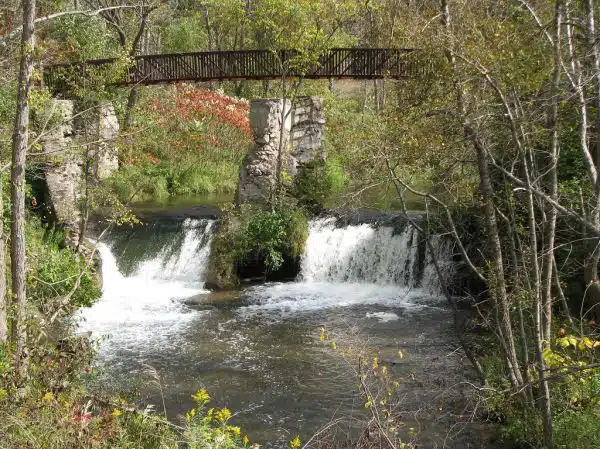


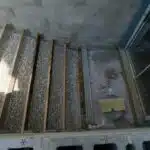
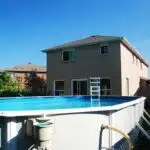
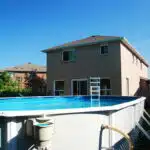

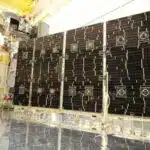



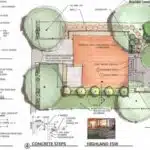






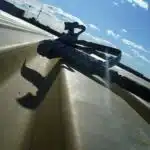



![How To Build A Detached Deck 23 Force Reconnaissance Detachment Deck Shoot [Image 4 of 4]](https://green-life.blog/wp-content/uploads/2023/05/RJo3tlizSGjq-150x150.jpg.webp)

